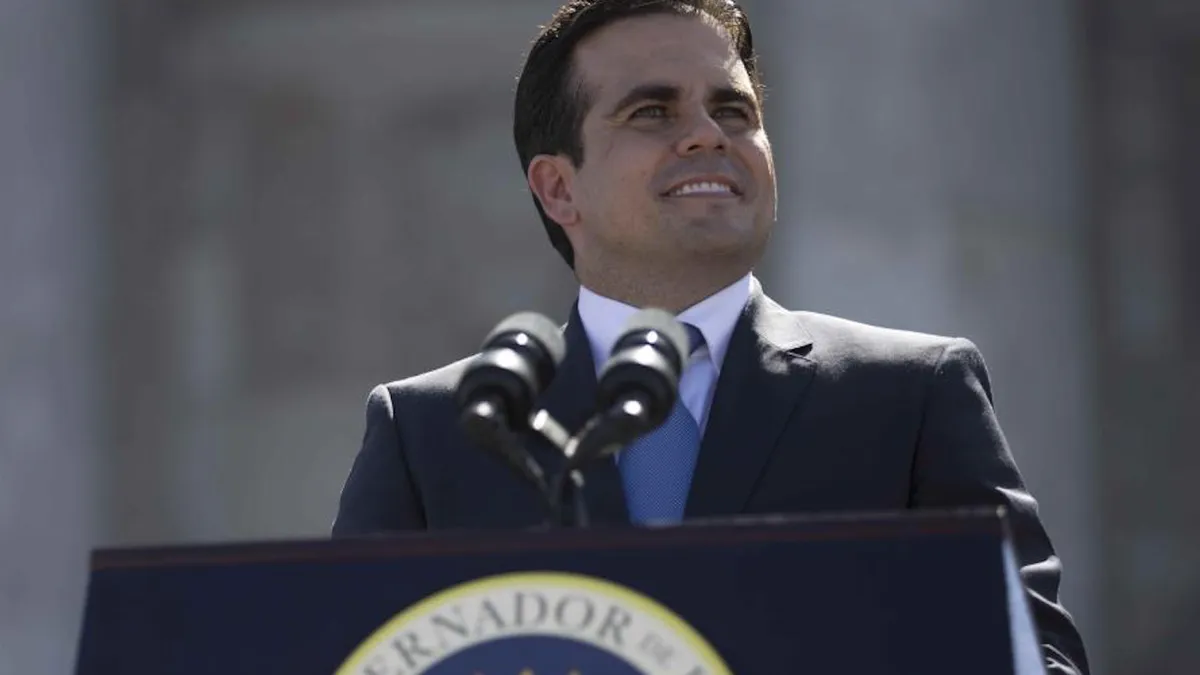Dive Brief:
- Puerto Rico Gov. Ricardo Rosselló on Thursday signed into law a 100% renewable energy mandate that the hurricane-battered island must meet by 2050.
- The Public Energy Policy Law of Puerto Rico, passed last month by territory legislators, directs the Puerto Rico Electric Power Authority to source 40% of its power from renewables by 2025 and cease burning coal in 2028 on its way to 100% renewables.
- The signing comes days after a Department of Energy official recommended the installation of a large gas generator in San Juan, but admitted it "may be at odds" with the 100% goal. PREPA's CEO told reporters it is evaluating the proposal in its revised integrated resource plan.
Dive Insight:
Rosselló’s signature makes Puerto Rico the latest in a string of U.S. jurisdictions to target 100% renewable or clean energy.
The law aims to move the island away from expensive imported oil, gas and coal, which today make up the brunt of its generation fleet. By 2028, PREPA would have to stop burning coal at the 454 MW Guayama facility, its only remaining generator that runs on the fuel.
To ease the transition to renewables, the bill would also establish deadlines for interconnecting distributed solar installations with the grid: 90 days for medium-sized systems (25 kW to 5 MW) and automatic interconnection for small projects (under 25 kW).
The law comes less than two years after Hurricane Maria destroyed PREPA's utility grid, leaving 1.5 million residents without power for months. PREPA CEO José Ortiz Vázquez on Tuesday told U.S. House lawmakers that the utility's grid is still vulnerable to outages in storms and hurricanes.
To strengthen the grid, DOE this week recommended the installation of a large gas generator in the Puerto Rico capital of San Juan. This, Assistant Secretary Bruce Walker said, would eliminate reliance on a series of transmission lines that carry power from generators in the south of the island — key failure points during Hurricane Maria.
PREPA agrees with DOE on the immediate need for a gas generator in San Juan, Ortiz said, but may scale down the plant from the 1.2 GW to 1.5 GW capacity range envisioned by the federal agency.
"If we go that big in size, it will harm the growth of the renewables," he told reporters after the hearing.
PREPA is currently making revisions to its 20-year IRP after Puerto Rico utility regulators rejected an initial proposal last month. Ortiz said the updated proposal will contemplate the DOE plant, as well as ways to scale up renewables.
"We have to create a harmony between the transition and the investment in the transitional infrastructure in order to be able to move into renewables without a lot of debt from natural gas infrastructure," he said. "That's part of the IRP."













